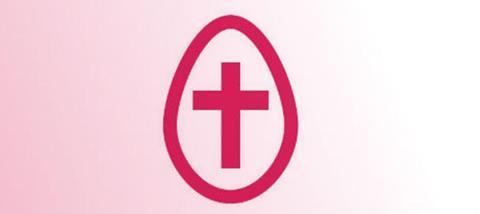
SAM DONOGHUE
CO-EDITOR , CHILDRENSWORK
One of the challenges with the central stories of our faith is that they can lose their power as children become so familiar with them. To help with this I like to look for different ways of telling the story that can ‘knock the children off balance’ a bit and allow them to engage afresh with what’s going on. This method relies on the children already knowing the story, as they will have to tell it themselves prompted by items and artefacts that you pass around. Sit the children in a circle and ask them to be silent and think about how each of these items relates to the story of Jesus’ death using the following objects:
Two dice
A robe
A crown of thorns – this can be made by wrapping some branches from a hedge into a wreath shape
A large nail
A natural sponge
Close with a period of silence or by reading the story out from the Bible so they can hear the parts they have been exploring in the wider narrative. You could then ask the children (if they want) to talk about what part they were particularly thinking about.
JO SQUIRES
BIG MINISTRIES
Easter is one of those celebrations where the clichés come flooding out. ‘Jesus died to save us from our sins. We are cleansed by the blood of the Lamb. He is risen, indeed. Alleluia!’ Don’t get me wrong, I know these things are true, but I’m not sure how much sense these phrases make to children (or even to us adults!). How do we explain what happened to cause our Easter celebrations? What does it mean for us today?
‘Walk with you’ is our favourite Easter song for four reasons: it sounds like a Take That pop-ballad, it helps us to explain (in part) what we celebrate at Easter, there is beautiful sign language to accompany it and it can help us respond to God.
Teaching the sign language for the song is a great way to engage everyone in beginning to understand what God has done through Jesus. We often talk through the words as a challenge (doing the signs alongside) and then use the song as our response.
The actions are available at bigministries.co.uk or on our Welcome to the BIG Academy Actions DVD.
MINA MUNNS
FLAME CREATIVE
Easter Pass the Parcel
Make a ‘pass the parcel’ with sweets, and pictures of events in the Easter story. In the centre put a big bag of sweets and a picture of the resurrection. From the centre outwards make the following layers including a sweet, and pictures of significant places and events associated
with Easter – the crucifixion, the garden of Gethsemane, the Last Supper, Palm Sunday. Then play the game, and as each layer is opened talk about the part of the story that is revealed.
The final layer will uncover the picture of the resurrection and the big bag of sweets. When Jesus died it was not the end of the story; he rose to new life. If we do wrong things we can ask God to forgive us and we get a new start too! This is good news not just for a few
people like those who got a sweet in each layer, but for everyone. Pass the bag of sweets around so that everyone has one and thank God for the chance for a new start.
Chalkboard Cross Reflection (suitable for an all-age service or Messy Church)
You will need:
A large, empty cross (a wooden cross painted with chalkboard paint is ideal, or a cross painted on a large piece of cardboard)
Selection of coloured chalks
Tell the Easter story and then have a look at your blank cross. Talk about the sadness of Good Friday and how people must have felt that their hope was gone because Jesus had died. Link this to times when we have done wrong things and how this makes us feel bad and empty inside. Then remind everyone that the Easter story didn’t end with Jesus dying but with him rising to new life, and that, if we ask God to forgive us, he will give us a new start. Ask people to come and add some decoration to the cross with coloured chalk as a sign of the new life that Jesus can bring to us. Even the very youngest children can join in.
STEVE MAWHINNEY
CHILDREN’S WORKER & CHILDRENSWORK’S GAMES MASTER
Easter Story Game
First get all the children to sit on the ground in a circle facing inwards. Make sure there is a space behind for people to run around the outside.
Choose four or five key words that are repeated several times in the Easter story, for example: cross, dead, tomb, morning, alive. Go around the circle and give one key word to each child. There should be more children than key words so each time you call a key word at least two or three children will be chosen. (Don’t worry if there isn’t the same number of children for each key word – as you’ll find that doesn’t really matter.)
The storyteller then begins to read the Easter story. When a child’s key word is read out they stand up, run around the outside of the circle and when they get back to their place they sit down again. (Make sure all the children run the same way round the circle to avoid accidents!) When reading, leave a little gap between key words so the children can still hear the story and not miss their key word.
As you read through the Easter story the children will hear the same key words come up again and again, which should highlight the key themes in the Easter story.






































